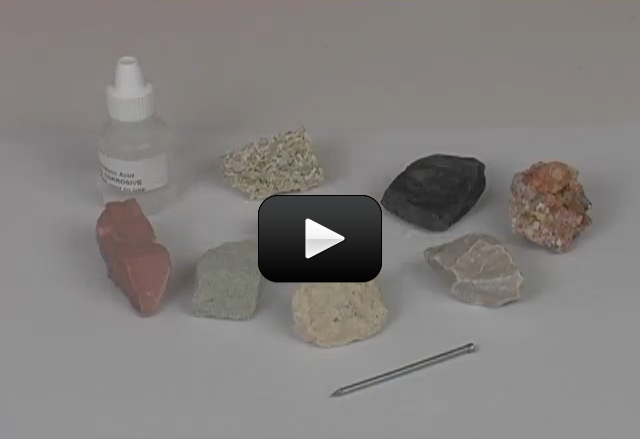Your goal is to identify samples according to their reactivity with acid. Minerals that react are called chemical rocks, and minerals that don’t are called clastic rocks. Some chemical rocks contain carbonate minerals, like limestone, dolomite, and marble which react with the acid.
Please login or register to read the rest of this content.


Sometimes rocks, like pumice, will have a coating on them that contains carbonate – you can tell because if you wash the rock, wait for it to dry and try it again, then it will no longer bubble.
Just a note, i feel like that pumice looking rock did bubble a little.
Sure! The link to our worksheet is just below the video. You can access it here as well (it’s on the second page of the PDF):
https://www.sciencelearningspace2.com/standardcontent/docs/Unit20-acid-test.pdf
Can you tell me where to find the Mineral Test Data Table that you show in the video. I would like to download and print it for our use. Thanks!
Your rocks may have only a small amount of the carbonate, so you may only get a small reaction. You can try a stronger acid, but white vinegar is still pretty strong as far as being able to get a reaction. (If you want a reaction just for the fun of it, dunk the rock in baking soda and then add the vinegar.)
I only got a small reaction from my rocks how do I get a bigger reaction.
Thanks – we’ll get those fixed right away!
I’ve noticed that you are re-doing a number of topics. Here are a few typos I found for this section:
Paragraph 3 after the video
A lot of rocks contain small amounts of calcite or other carbonate minerals, so all of these make a ?fizz?
Paragraph 4 after the video
releasing carbon dioxide gas into the ?air?